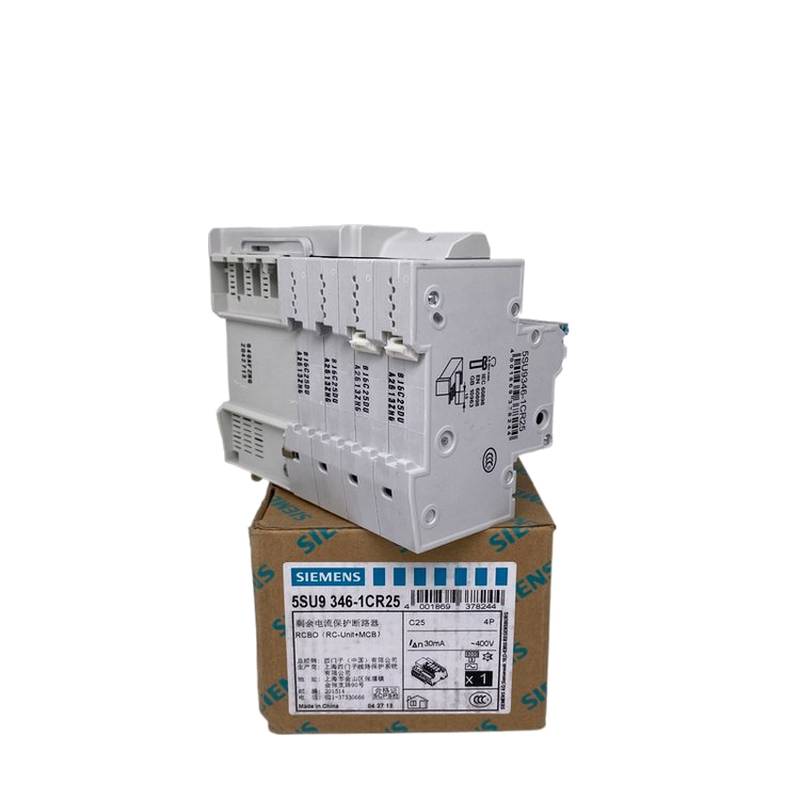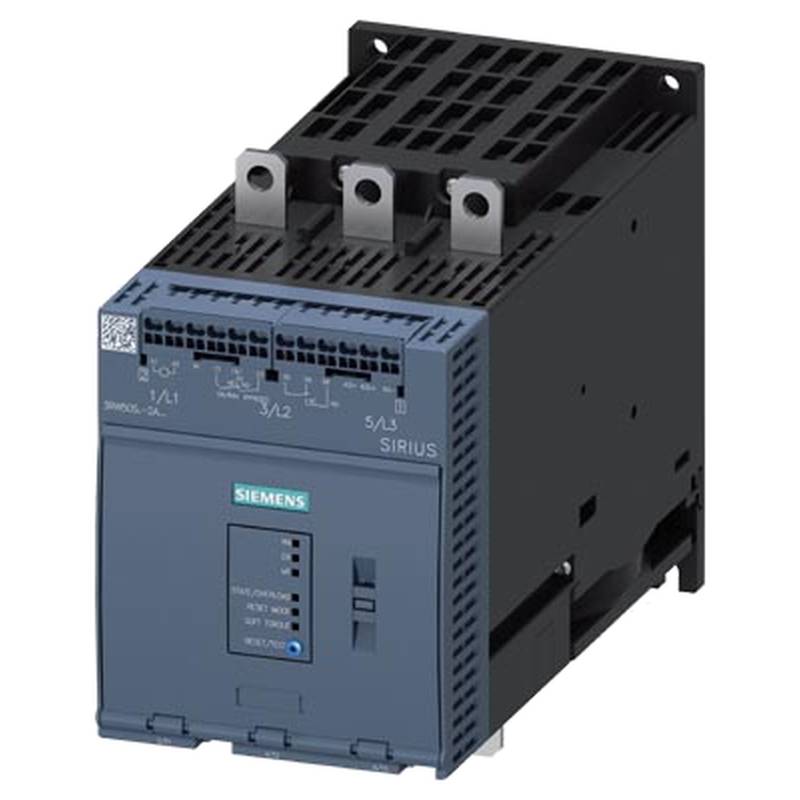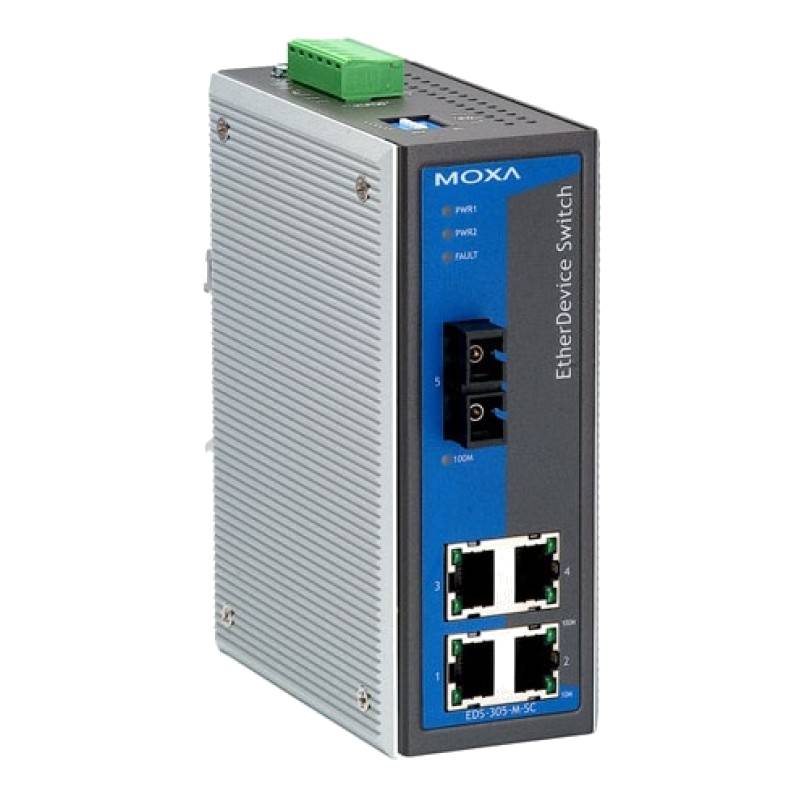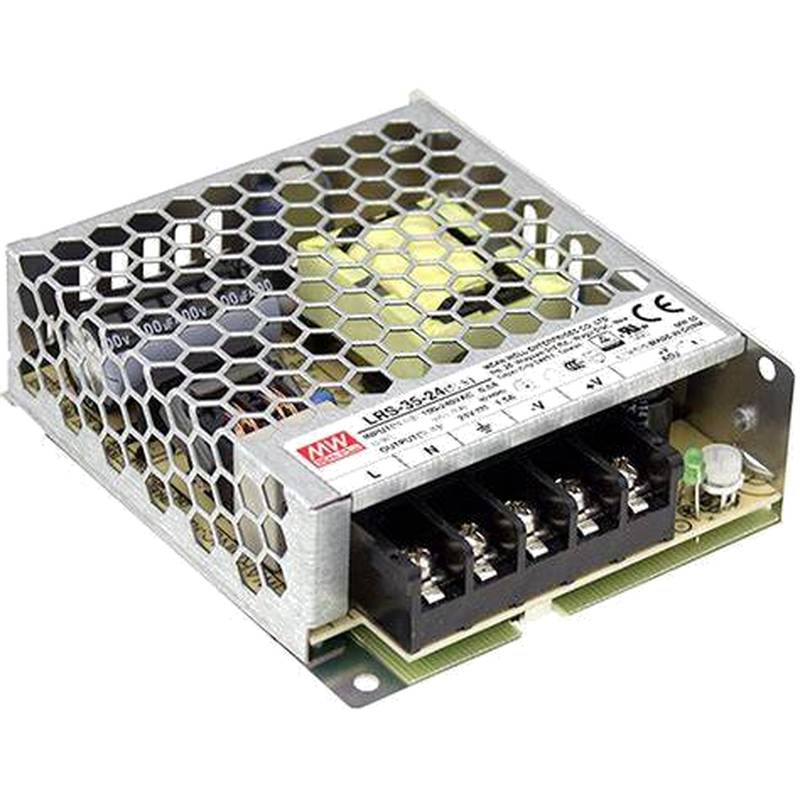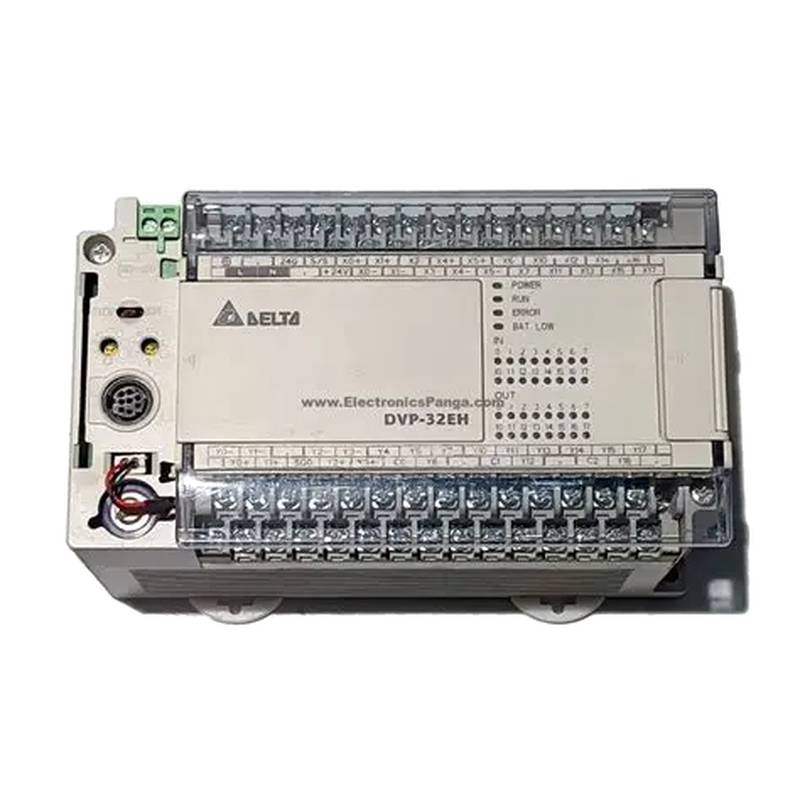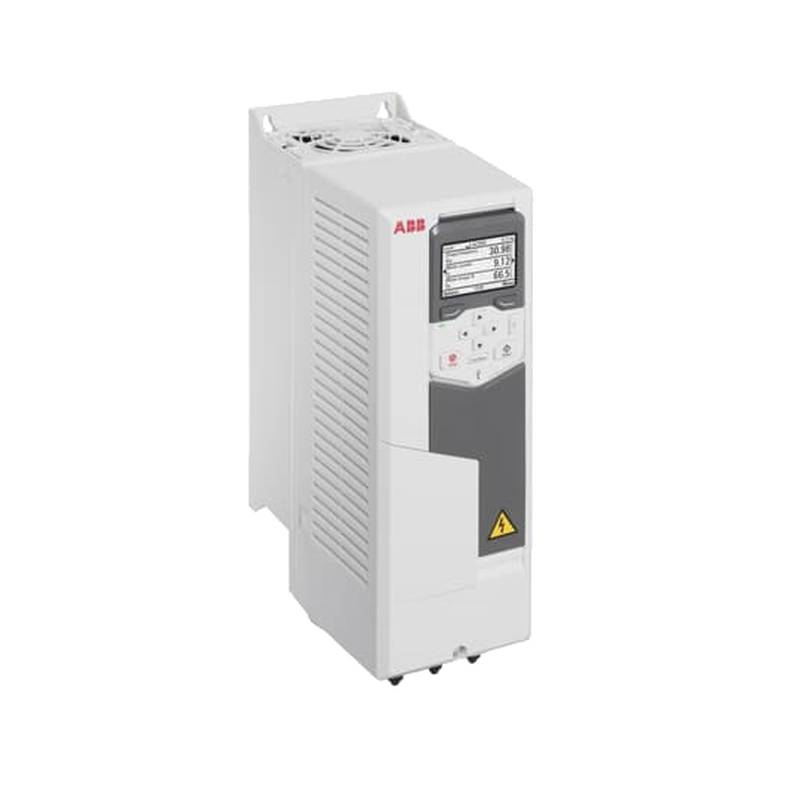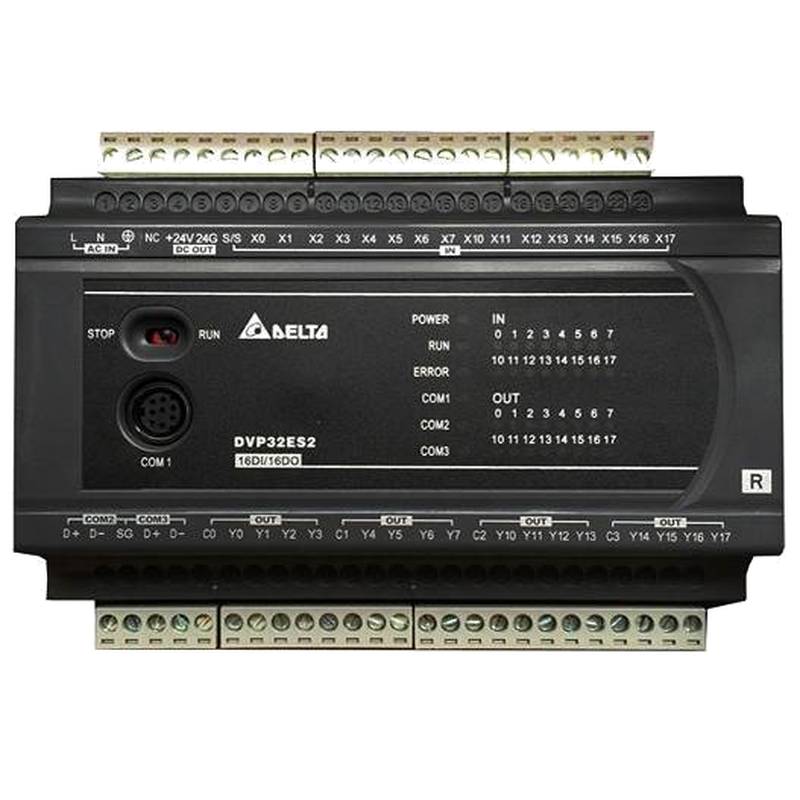
The Siemens 5SU9346-1CN63 is a four-pole Residual Current Circuit Breaker with Overcurrent protection (RCBO) designed for robust electrical system safety. This unit offers a breaking capacity of 6 kA and features a C-curve tripping characteristic, making it suitable for applications with moderate inrush currents. With a rated current of 63A and a residual current sensitivity of 30mA, it provides essential protection against overload, short circuits, and dangerous earth leakages, safeguarding both personnel and equipment. Its Type AC sensitivity ensures detection of sinusoidal AC residual currents.
Product Specifications
| Specification | Value |
| :------------------------ | :------------------------------------------- |
| Product Number | 5SU9346-1CN63 |
| Type | RCBO (Residual Current Circuit Breaker with Overcurrent protection) |
| Poles | 4 |
| Rated Current (In) | 63A |
| Tripping Sensitivity (IΔn)| 30mA |
| Breaking Capacity (Icn) | 6 kA |
| Tripping Characteristic | C-Curve |
| Residual Current Type | Type AC |
| Rated Voltage (Un AC) | 230 V |
| Net Weight | 0.500 Kg |
| Country of Origin | China |
| RoHS Directive Compliance | Yes (Since 01.05.2015) |
| Product Lifecycle | Active Product |
Core Features & Market Positioning
The Siemens 5SU9346-1CN63 RCBO stands out in the market for its integrated approach to circuit protection. It combines the functionalities of a residual current device (RCD) and a miniature circuit breaker (MCB) into a single, compact unit. This integration offers significant space savings within electrical panels, a crucial advantage in modern installations where space is often at a premium. The device's high sensitivity at 30mA ensures rapid disconnection, effectively preventing electric shock and mitigating fire hazards, positioning it as a critical safety component for both residential and industrial applications. Siemens' reputation for reliability and advanced engineering underpins the market positioning of this RCBO as a dependable solution for comprehensive electrical safety.
Key Application Scenarios
This Siemens 5SU9346-1CN63 RCBO is highly versatile, finding application in a broad spectrum of electrical systems. Its primary role is in providing comprehensive protection against overcurrents (overloads and short circuits) and residual currents. It is particularly well-suited for final circuits in residential buildings, commercial establishments, and industrial facilities where safeguarding personnel from electric shock and protecting equipment from damage are paramount. The C-curve characteristic makes it appropriate for circuits supplying equipment with moderate inductive loads or inrush currents, such as lighting systems or general-purpose outlets. Its four-pole configuration is ideal for three-phase power distribution systems. The 30mA sensitivity aligns with recommendations for additional protection in circuits like those for outdoor use or socket outlets, enhancing overall electrical safety compliance.
Practical System Integration Guidance
Integrating the Siemens 5SU9346-1CN63 RCBO into existing electrical infrastructure is designed to be straightforward. As an RCBO, it simplifies installation by replacing separate RCD and MCB units, reducing wiring complexity and saving space. The device is designed for mounting on standard DIN rails, a common feature in most electrical distribution boards. Proper wiring involves connecting the incoming power supply to the line terminals (typically marked L and N for single-phase or L1, L2, L3, N for four-pole configurations) and the outgoing circuit to the load terminals. For four-pole applications, ensuring correct phase and neutral connections is critical to achieving balanced protection. When installing multiple RCBOs or combining them with other protective devices, adherence to selectivity principles is important to ensure that only the affected circuit is disconnected during a fault, preventing nuisance tripping of upstream devices.
Operation and Risk Mitigation
The Siemens 5SU9346-1CN63 RCBO provides automatic protection against electrical faults. In the event of an overload or short circuit, the integrated MCB function will trip, disconnecting the power. If a residual current exceeding the 30mA threshold is detected, the integrated RCD function will activate, rapidly breaking the circuit to prevent electrocution or fire. All four poles are disconnected simultaneously, ensuring complete isolation of the circuit and simplifying troubleshooting. The clear on/off status indication on the device helps in quickly identifying its operational state. Risk mitigation is inherently built into its design, but users should always follow electrical safety best practices, such as de-energizing circuits before performing maintenance and ensuring proper installation by qualified personnel. Common troubleshooting involves identifying the cause of the trip – whether it's an overload, a persistent earth fault, or a faulty appliance – and addressing it before resetting the breaker.
Scalability & Long-Term Value
The Siemens 5SU9346-1CN63 RCBO, as part of Siemens' broader SENTRON product family, offers considerable long-term value and scalability. Its modular design ensures compatibility with other Siemens low-voltage components and distribution systems. This compatibility facilitates future expansions or upgrades to the electrical installation. For instance, its integration with an Arc Fault Detection Device (AFD) can provide an additional layer of protection against arcing faults, a significant fire risk in some installations. While this specific model is designed for direct protection, its presence in a well-designed distribution system allows for flexible configurations that can adapt to evolving power requirements or the integration of smart grid technologies. The robust construction and Siemens' commitment to quality ensure a long operational lifespan, contributing to the overall long-term value of the electrical infrastructure.
Frequently Asked Questions (FAQs)
What is the primary function of the Siemens 5SU9346-1CN63 RCBO?
This RCBO primarily functions as a dual-protection device. It combines residual current detection and overcurrent protection in a single unit.
It safeguards individuals from dangerous electric shocks by detecting earth leakages and rapidly disconnecting power. It also protects electrical circuits and equipment from damage caused by overloads and short circuits.
This comprehensive protection makes it a vital component for ensuring electrical safety in residential, commercial, and industrial environments.
What is the significance of the 30mA sensitivity on this RCBO?
A 30mA residual current sensitivity indicates the device will trip when it detects a leakage current of 30 milliamperes or more. This level is widely recognized as the threshold for preventing serious harm to humans.
It provides crucial protection against indirect contact, where a person might touch a live part due to an insulation fault. Rapid tripping prevents sustained contact and potential electrocution.
This sensitivity level is often recommended or mandated by electrical codes for socket outlets and circuits supplying power to sensitive equipment or areas like bathrooms and kitchens.
Can the Siemens 5SU9346-1CN63 RCBO be used in three-phase systems?
Yes, the 5SU9346-1CN63 is a four-pole (4P) RCBO. This configuration is specifically designed for use in three-phase power distribution systems.
The four poles ensure that all three live phases and the neutral conductor are switched and protected. This is essential for balanced protection in three-phase loads and circuits.
Proper connection of all four poles is critical for the correct operation and safety of the three-phase system when using this RCBO.
What does the 'C-Curve' tripping characteristic mean for this RCBO?
The C-curve tripping characteristic indicates how the RCBO responds to overcurrents. It is designed to tolerate moderate inrush currents.
This means it is less likely to trip unnecessarily when a circuit experiences a temporary surge of current, such as from the startup of certain motors or lighting fixtures.
It provides reliable protection against short circuits while allowing for the operation of equipment with typical inductive loads without nuisance tripping.
What is the breaking capacity (Icn) of 6 kA and why is it important?
A breaking capacity of 6 kA signifies the maximum fault current the RCBO can safely interrupt without sustaining damage. This is a critical safety rating.
Ensuring the breaking capacity of the protective device exceeds the prospective short-circuit current at the installation point is vital. This prevents catastrophic failure of the device during a severe fault.
For most standard residential and commercial applications, a 6 kA breaking capacity offers adequate protection, but system design calculations are necessary for confirmation.
How does the 'Type AC' residual current detection work?
'Type AC' refers to the type of residual current the device is sensitive to. It is designed to detect sinusoidal alternating residual currents.
This means it effectively detects leakage currents that are characteristic of typical AC power systems and many common appliances.
For applications involving pulsating DC residual currents or smoother DC leakage currents, Type A or Type B RCBOs may be required.
What is the difference between an RCBO and an RCCB?
An RCCB (Residual Current Circuit Breaker) primarily detects and protects against earth leakage currents, preventing electric shock. It does not provide overcurrent protection.
An RCBO (Residual Current Circuit Breaker with Overcurrent protection) integrates both residual current detection and overcurrent protection (overload and short circuit) into a single device.
Therefore, an RCBO offers a more complete, all-in-one solution for circuit protection compared to an RCCB alone.
Can this RCBO be used for overload protection only?
No, the primary purpose of an RCBO is to provide combined protection. While it does offer overload protection, it is intrinsically linked with residual current detection.
The device is engineered to trip for either an earth leakage fault or an overcurrent condition. It is not designed to function solely as an overload protector without its residual current sensing capability.
Using it only for overload protection would bypass its crucial safety function for earth leakage, compromising electrical safety.
How is the Siemens 5SU9346-1CN63 installed in a distribution board?
This RCBO is designed for easy installation on standard 35mm DIN rails, which are commonly found in electrical distribution boards.
Installation involves snapping the device onto the DIN rail and connecting the incoming power supply to the line terminals and the outgoing circuit to the load terminals.
Ensure all connections are secure and correctly wired according to electrical codes and the manufacturer's instructions for safe and effective operation.
What are the RoHS compliance and REACH implications for this product?
RoHS compliance, meaning the product adheres to restrictions on hazardous substances, is confirmed for this Siemens RCBO. It has been compliant since May 1, 2015.
REACH (Registration, Evaluation, Authorisation and Restriction of Chemicals) obligations are also addressed. The product contains substances like Lead (CAS-No. 7439-92-1) and Lead monoxide (CAS-No. 1317-36-8) above the 0.1% threshold.
This information is crucial for users needing to comply with chemical substance regulations in their respective regions and for overall environmental and safety awareness.














